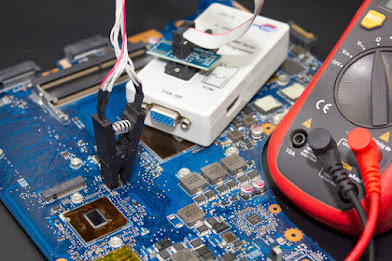The Ultimate Guide to DIY Tech Projects: Empower Your Skills and Save Money
In today’s fast-paced digital world, being tech-savvy goes beyond just using devices—it means knowing how they work, how to fix them, and how to upgrade or customize them. This is where DIY (Do-It-Yourself) comes into play. For IT students and tech users, DIY is more than just a cost-saving technique—it's a gateway to mastering real-world skills, boosting creativity, and standing out in a competitive tech industry.
Whether you’re fixing a broken laptop, setting up a home server, or building a custom PC from scratch, DIY projects help bridge the gap between theory and practice. This blog post will walk you through what DIY means in a tech context, highlight essential tools and skills, and share practical tech projects you can start today.
What is DIY in Tech?
DIY stands for "Do It Yourself." In the tech world, it refers to performing tasks—like repairing, modifying, or building tech devices—without professional help. This includes:
- Assembling your own computer
- Repairing smartphone screens or laptop keyboards
- Setting up home automation systems
- Installing operating systems and dual-boot setups
- Configuring networks or servers
DIY is not just about saving money—it's about gaining hands-on experience and confidence in solving problems independently.
Benefits of DIY for IT Students and Tech Users
1. Skill Development
- Improves your understanding of hardware and software
- Builds troubleshooting and diagnostic skills
- Boosts coding and system configuration abilities
2. Cost Efficiency
- Reduces repair and maintenance costs
- Eliminates service center fees for minor fixes
- Allows you to reuse old tech with upgrades
3. Career Advantages
- Enhances your resume with practical experience
- Prepares you for certifications like CompTIA A+, Network+, and more
- Gives you confidence during job interviews or internships
4. Creativity and Customization
- Personalize your devices and software environments
- Try out experimental technologies like Raspberry Pi or Arduino
- Create smart home setups tailored to your needs
Essential Tools for Tech DIY Projects
Before diving into DIY projects, here are the tools every tech DIYer should own:
| Tool | Purpose |
|---|---|
| Precision Screwdriver Set | Opening phones, laptops, and peripherals |
| Anti-static Wrist Strap | Prevents electrostatic discharge (ESD) |
| Multimeter | Measures voltage, resistance, and continuity |
| Soldering Kit | For chip-level motherboard or hardware repair |
| Thermal Paste | Useful when reseating CPUs or GPUs |
| USB Bootable Drives | Installing or repairing OS |
| Cable Tester | Useful for network and LAN wiring |
| External Hard Drive / SSD | Backups and OS imaging |
Top DIY Tech Projects for Beginners
🔧 1. Build Your Own PC
Learn how to:
- Choose compatible components (CPU, GPU, RAM, etc.)
- Assemble them into a case
- Install an operating system (Windows or Linux)
- Configure BIOS and drivers
🔧 2. Install Linux on an Old Laptop
Why this is great:
- Revives slow machines
- Helps you learn Linux terminal commands
- Great practice for IT certifications
Steps:
- Download a Linux distro (Ubuntu, Mint, Fedora)
- Create a bootable USB drive with Rufus or Etcher
- Boot from USB and install Linux
- Explore package managers, file systems, and shell scripting
🔧 3. Create a Personal Cloud Server (Nextcloud)
Turn a Raspberry Pi or old PC into a self-hosted cloud.
Benefits:
- Control your data
- Sync files across devices
- Learn networking, security, and server management
🔧 4. Set Up a Home Network Lab
Perfect for networking students. Practice:
- IP configuration
- Router/firewall setup
- VLANs and DHCP
- Remote access (SSH, RDP)
🔧 5. Upgrade Laptop RAM or Storage
- Open your laptop carefully using proper tools
- Identify RAM slots or SSD/HDD bays
- Upgrade and test with tools like CPU-Z or CrystalDiskMark
Safety Tips for DIY Tech Projects
- Always back up your data before starting
- Use anti-static wrist straps and mats
- Label screws and components for easy reassembly
- Work in a clean, well-lit environment
- Follow manufacturer guides and teardown tutorials
Learning Resources to Improve Your DIY Skills
📚 Websites
- iFixit.com – Repair guides and teardowns
- Techspot.com – Hardware tips and benchmarks
- Instructables.com – DIY tech tutorials
📺 YouTube Channels
- Linus Tech Tips
- ETA Prime
- Tech YES City
- LearnLinuxTV
🧠 Certifications
- CompTIA A+
- CompTIA Network+
- Cisco CCNA
- Google IT Support Certificate
Common Mistakes in Tech DIY (And How to Avoid Them)
| Mistake | Solution |
|---|---|
| Not backing up data | Always backup before modifying systems |
| Using wrong tools | Invest in proper precision tools |
| Skipping manuals or tutorials | Read/watch guides thoroughly |
| Rushing the process | Take your time and double-check everything |
| Ignoring safety | Use anti-static protection and power off devices |
Advanced DIY Projects to Try Next
💡 BIOS Reprogramming
Use tools like the CH341A programmer and SOIC clips to reflash corrupted BIOS chips.
💡 Build a Smart Mirror
Combine a Raspberry Pi, two-way mirror, and display to show calendar, time, weather, and news.
💡 Create a Hackintosh
Install macOS on non-Apple hardware using OpenCore and compatible parts.
💡 Setup a Virtual Lab
Use VirtualBox or VMware to run and test multiple OS environments for cybersecurity or IT training.
Conclusion: Start Your DIY Tech Journey Today
Tech DIY projects offer endless opportunities for learning, savings, and innovation. As an IT student or enthusiast, diving into DIY not only reinforces your technical knowledge but also builds problem-solving skills that are essential in the tech industry.
So, grab your toolkit, pick a project, and start building your skills—one DIY at a time!
FAQs About DIY in Tech
❓1. Is DIY tech safe for beginners?
Yes, as long as you follow safety precautions, use the right tools, and take your time.
❓2. What is the cheapest DIY tech project I can start with?
Installing Linux on an old laptop or setting up a Raspberry Pi project are great budget-friendly options.
❓3. Do I need programming knowledge for DIY?
Not always. Many hardware and setup projects require little to no coding. However, learning Python or bash scripting can help.
❓4. Can I make money from DIY tech skills?
Yes! Offer services like PC building, laptop repair, or home network setup as a side hustle or business.
❓5. Where can I buy DIY tools and parts?
Check Amazon, Jumia, AliExpress, or local electronics and computer stores.






Comments
Post a Comment